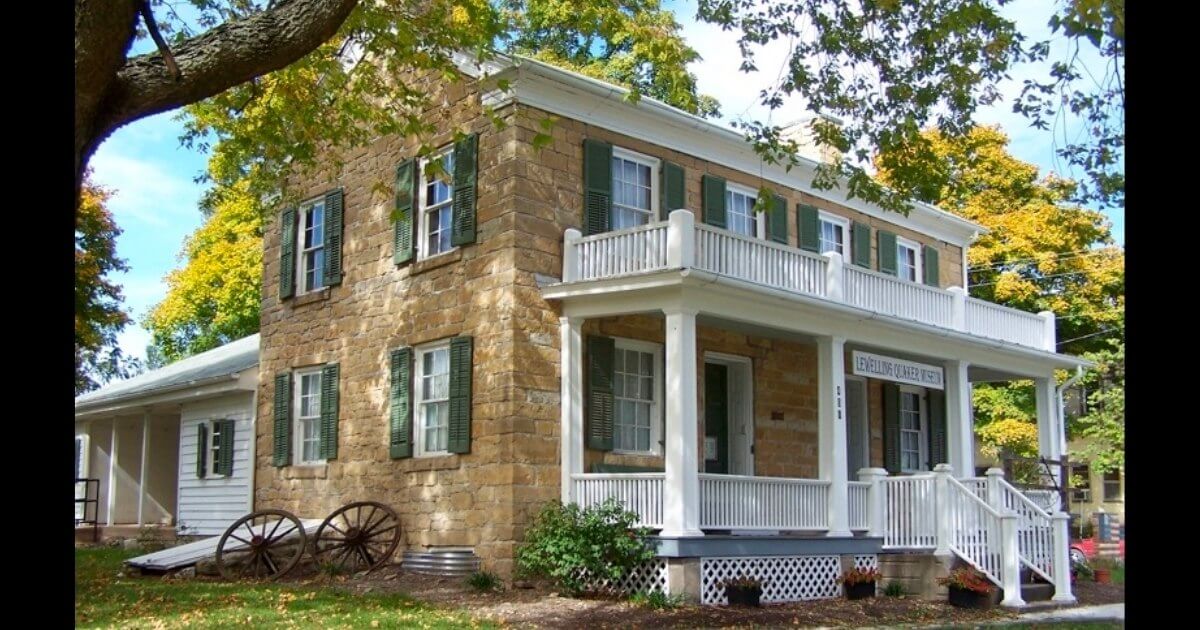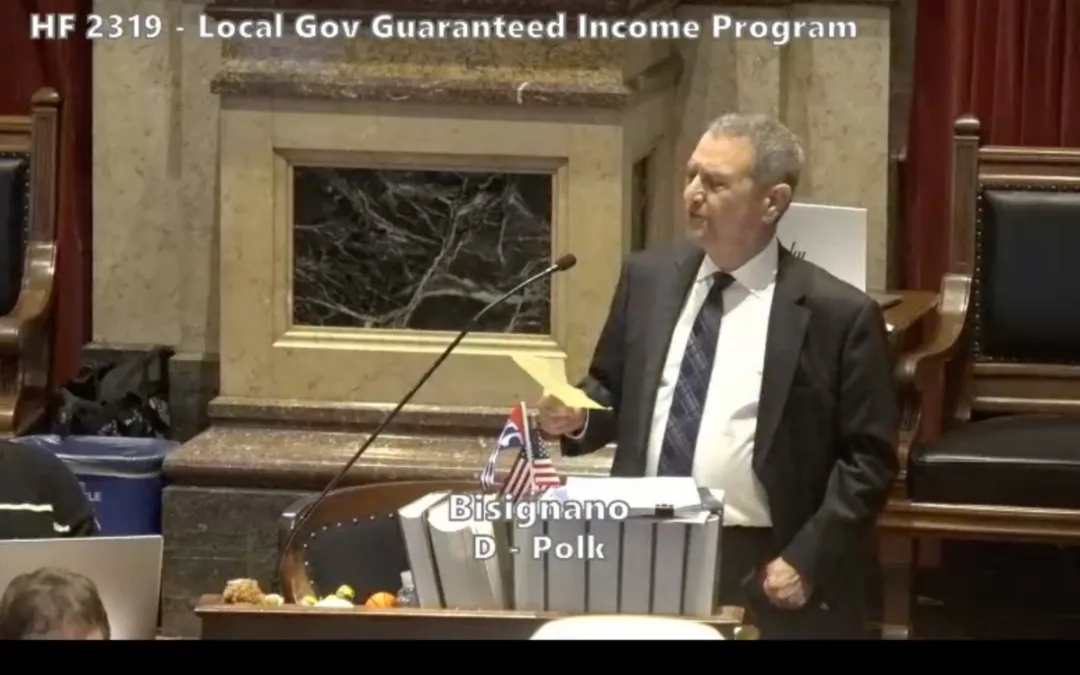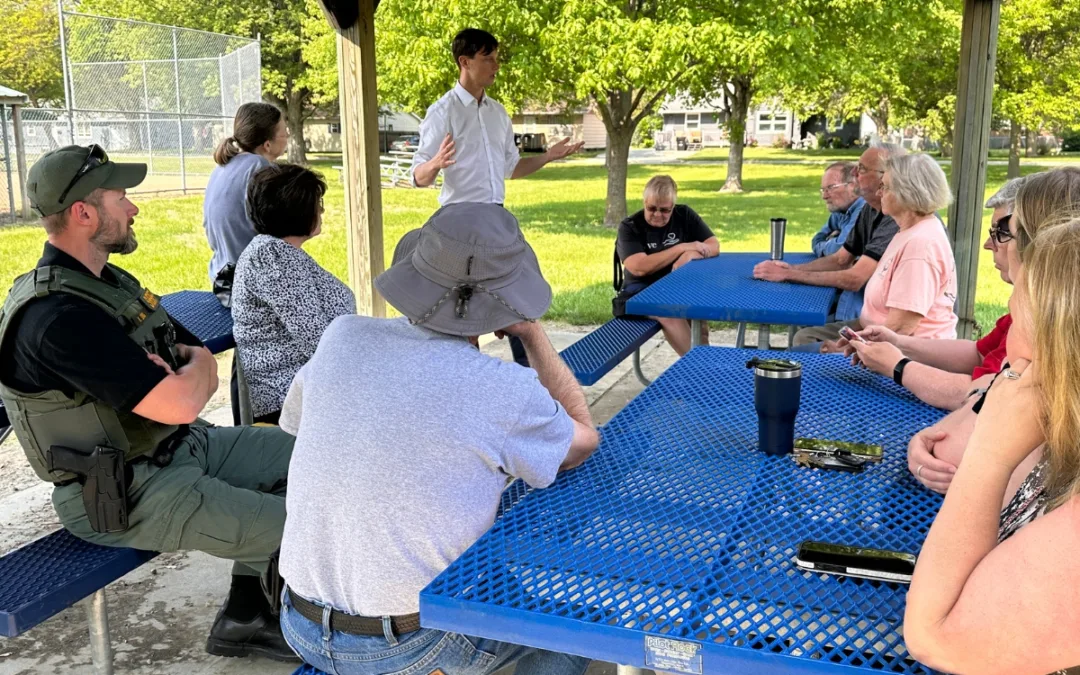
Front view of the Henderson Lewelling House/Jean Leeper, NPS-NHL.
As a free state bordering a slave state, Iowa was poised to play an important role in the Underground Railroad, and many Iowans risked their safety to serve as conductors.
Tensions ran high between the two states, with Missourians sometimes coming over the state line to try to capture Freedom Seekers or intimidate conductors. This continued through the beginning of the Civil War: the town of Croton, Iowa, just 20 miles south of Salem, was the site of a little-known Civil War battle.
Today, the small town of Salem, Iowa, which sits in Henry County in the southeast part of the state, might look unassuming to many people who pass through. But the town has a rich history of its own, and it played an important part in the history of our nation, too. Salem was an important stop on the Underground Railroad, for Freedom Seekers heading east to Chicago or north to Canada. Here are a few things to know about Salem’s role in Iowa’s Underground Railroad history.
Salem was one of a handful of Iowa stations on the Underground Railroad
Abolitionists in Salem were part of a statewide network of people working to end slavery. For some Iowans, this meant joining John Brown during the assault on Harpers Ferry, and for others, like many families in Salem, abolition meant hiding and guiding Freedom Seekers on their journey north.
[inline-ad id=”0″]
In Iowa, many Freedom Seekers would come up through Missouri or Kansas, sometimes making their way northeast from Tabor, Iowa, which sits in the Southwest part of the state. Salem, also near the Missouri border in Southeast Iowa, was also an important stop and several houses served as Underground Railroad Depots, including the Lewelling house, the Beehive, and Henderson Hotel. From here, Freedom Seekers would continue their journey to or from other Iowa towns including Iowa City, Des Moines, Grinnell, and Clinton.
The Lewelling Quaker Museum once housed enslaved people escaping to freedom
Built by Henderson Lewelling in 1843, the museum was once the Lewelling family home and was built with trap doors and hiding spaces to keep Freedom Seekers out of sight if the law or slave catchers came by. The museum is open to the public today, and you can learn about the family’s daily life and about the house’s role in Underground Railroad history.
“Hushpuppies” were used to keep Freedom Seekers safe
According to the Lewelling family’s records at the State Historical Society of Iowa, the term “hushpuppies” had a different meaning here than it did elsewhere: When the Quaker abolitionists would head to church each Sunday, they would toss fritters into their yards that were laced with poison. If slave catchers came through while they worshipped, their dogs would eat the poisoned treats, which would hopefully keep them from sniffing out the Freedom Seekers hiding in local homes.
[inline-ad id=”1″]
The Lewelling was forced to leave Iowa because of their work on the Underground Railroad
According to Henderson Lewelling’s descendants, he was driven out of town for his involvement in the Underground Railroad. In fact, many Salem Quakers were disowned by their local meeting, as happened in Quaker communities around the country, over the issue of slavery. While Quakers were largely abolitionists, many supported the principle but were not active involvement in the Underground Railroad.
The family traveled westward on the Oregon Trail with hundreds of fruit trees, eventually settling in the Willamette Valley. They would go on to propagate Bing cherries, and Henderson would eventually earn the title of “Father of the Pacific Fruit Industry.”
Anti-slavery Quakers in Salem had their own cemetery
According to local historian Jean Leeper, abolitionist Quakers in Salem were buried in their own section of the Salem cemetery. This section, called the South cemetery, sits just below the old Quaker cemetery plots, and Leeper even compiled a list of the names of people buried there.
[inline-ad id=”2″]
The Garretson family farm has remained in the family since 1837
The Garretsons were also important figures in Iowa’s Underground Railroad history: Joel C. Garretson, who moved to Iowa in 1837, was a conductor on the Underground Railroad, shepherding Freedom Seekers to safety. He had a $500 bounty on his head but was never caught. Many Iowa farms have fallen out of families’ hands in recent years, but the Garretsons have continued to live and work in Salem: Their farm, along with Shaff farm farther north, are the two oldest farms in Iowa to be continuously owned by the same family.
Salem Underground Railroad conductors were taken prisoner by Missouri slaveholders
One newspaper account of an 1850 fugitive slave trial details the role Salem’s residents had in helping two Freedom Seekers escape from Missouri. After trying to guide the Freedom Seekers to safety, 14 town residents were captured by an angry mob of slaveholders and their accomplices. They were eventually released, but only because the sheriff of nearby Mt. Pleasant, Iowa rushed to their aid.
Conductors in Salem faced the wrath of slave catchers, who were paid bounties to return Freedom Seekers, more than once: A replica cannon in front of the Lewelling Museum pays tribute to one evening’s events, where slave catchers threatened to shoot a cannonball through the house if Henderson Lewelling did not release the Freedom Seekers inside (he did not, but miraculously the cannonball was never fired).
[inline-ad id=”3″]
The Lewelling Quaker Museum is part of the National Park Service’s Network to Freedom
The Network to Freedom lists more than 690 locations in the United States that were important to the Underground Railroad. These include houses, such as the Lewelling Quaker Museum, as well as businesses and even cemeteries.
By Dr. Julia Skinner
[inline-ad id=”4″]
Iowa Starting Line is part of an independent news network and focuses on how state and national decisions impact Iowans’ daily lives. We rely on your financial support to keep our stories free for all to read. You can contribute to us here. Also follow us on Facebook and Twitter.
Politics

6 terrifying things that could happen if the Comstock Act is used to target abortion
Does 1873 sound like a really, really long time ago? Well, that’s because it is—but if Republicans and far-right anti-abortion activists have their...

Iowa parents explain how ‘fetal personhood’ would harm IVF
Lyndi Buckingham-Schutt and her husband Andy Schutt, both Des Moines residents, always knew they wanted to have children. When Lyndi was 30, they...
Local News

No more Kum & Go? New owner Maverik of Utah retiring famous brand
Will Kum & Go have come and gone by next year? One new report claims that's the plan by the store's new owners. The Iowa-based convenience store...

Here’s a recap of the biggest headlines Iowa celebs made In 2023
For these famous Iowans, 2023 was a year of controversy, career highlights, and full-circle moments. Here’s how 2023 went for the following Iowans:...




